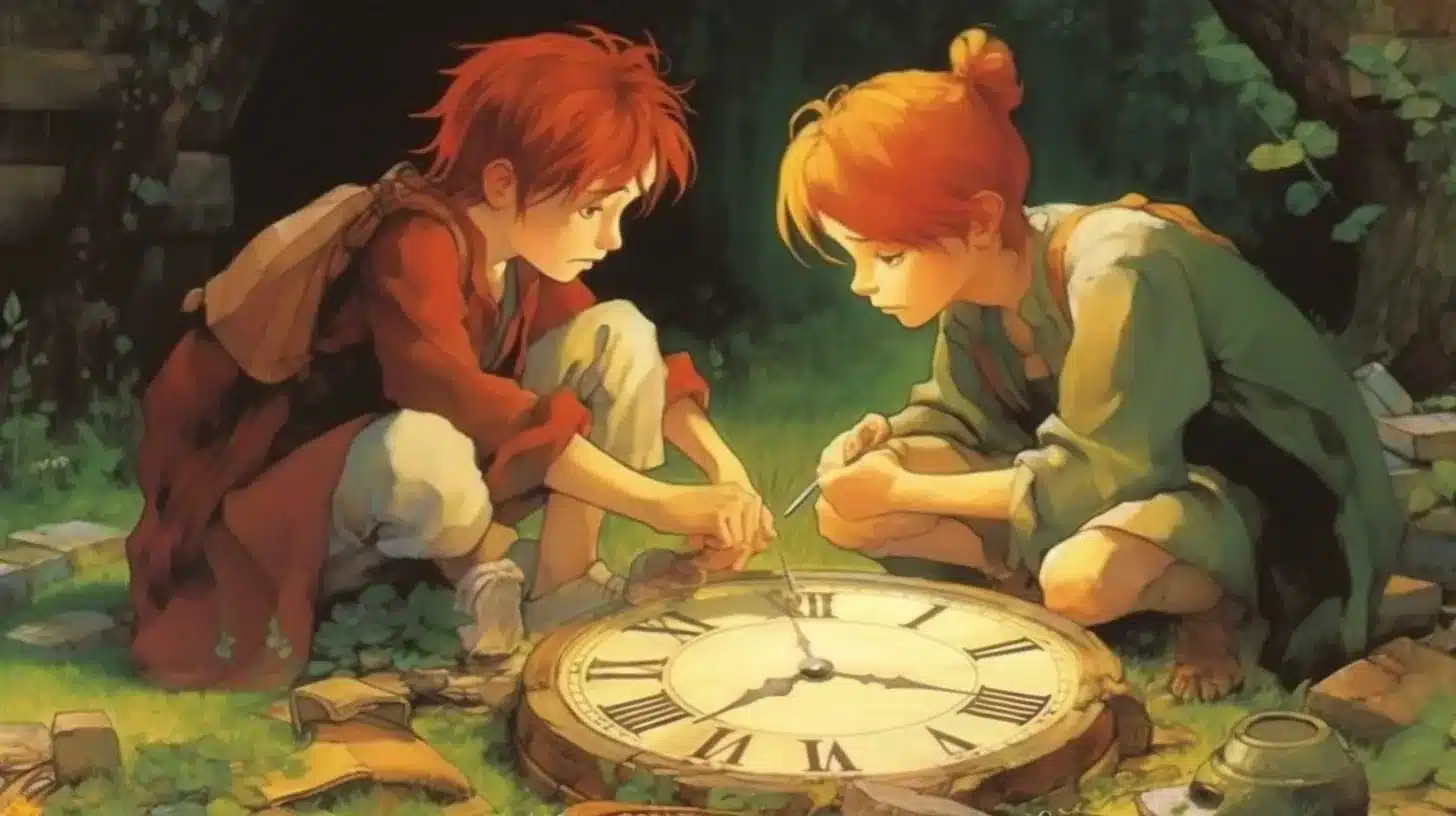Or How I Learned to Stop Worrying and Love the Thimble Cupboard.
Within the hallowed, dog-eared pages of children’s literature lies a tale so miniature, so delightfully domestic in scale, that it might just crawl under your floorboards and redecorate with a postage stamp. I speak, of course, of Mary Norton’s The Borrowers, first published in 1952—an era when rationing was real and the idea of living off the scraps of others was both a literary conceit and a post-war lifestyle.
Revisiting The Borrowers as an adult is like opening a dollhouse you forgot you owned, only to find it fully furnished and slightly resentful that you left it for so long. This is not merely a children’s book. It is a study in domestic micro-anthropology, a love letter to lost things, and a gentle philosophical inquiry into the ethics of teacup appropriation.
Story
At the very heart of The Borrowers—and I do mean the heart, no bigger than a Tic Tac—live the Clock family: Pod, Homily, and their daughter Arrietty, whose name sounds like a sneeze and reads like a poem. They reside beneath the kitchen floor of an old English country house, a setting that practically begs for odd noises and off-screen scuttling.
These are no ordinary houseguests. They are borrowers, the Lilliputian looters of forgotten buttons and overlooked blotting paper. Their lives are a Pinterest board of upcycling: thimbles become teacups, safety pins are grappling hooks, and postage stamps become Louvre-worthy tapestries.
Norton’s world-building is nothing short of extraordinary. With a keen eye for detail, she transports readers into the secret lives of the borrowers, a realm where the mundane becomes extraordinary. Extraordinary, indeed. Norton has a gift for rendering the dull detritus of human life through the lens of people roughly the size of a salted peanut. Her pacing is leisurely—more afternoon tea than Red Bull—and allows us to linger in the hand-sewn upholstery of miniature domesticity.
Each character is crafted with the precision of a handmade doily. Pod is the rugged provider with the quiet gravitas of a man who has faced down a mouse and lived to tell the tale. Homily is equal parts anxiety and homemaker pride, always one startled noise away from a full-blown crisis. And Arrietty—dear, precocious Arrietty—is the adolescent spirit of inquiry in a world where curiosity might get you literally squashed.
The story’s conflict arises when Arrietty, against the wishes of her protective parents, befriends a human boy named “the Boy.” And there it is: the tale’s central tension. Giant and Borrower. The Boy, a mostly unnamed but not unkind human child, becomes both friend and existential threat. What begins as a sweet interspecies exchange quickly spirals into borrower-level DEFCON 1. What if they’re seen? What if they’re captured? What if someone borrows the borrowers?
Review
The Borrowers does something very special. It doesn’t just ignite the imagination; it casually throws a match into the dry pine needles of your childhood wonder and watches it blaze. It whispers, what if? into the dust bunnies beneath your couch.
It invites us to ponder the hidden worlds that may exist right under our noses, stirring within us a sense of wonder for the seemingly ordinary. And really, that’s the magic of it. Norton dares us to believe in the lives we don’t see. She does not condescend to children, nor does she infantilize her characters. There’s a respectful solemnity in her whimsy, like she knows very well this all might be real, and you should check your floor vents just to be sure.
The question of ethics bubbles gently beneath the surface.
The borrowers do not see themselves as thieves, but rather as resourceful survivors. This is not Ocean’s Eleven; this is Make-Do and Mend*: Micro Edition*. They don’t take what you’ll miss. They take what you’ve already emotionally released. The subtext here is thick with commentary on sustainability, on shared spaces, on the fine line between salvaging and stealing. And it all fits inside a matchbox.
Norton’s prose is quietly brilliant. Her humour is soft-spoken, her dialogue as natural as if you’d overheard it from inside a teapot. The world is rendered in such tactile detail that you feel you, too, could furnish a living room with nothing but pins and broken cuff links.
The illustrations by Beth and Joe Krush add another layer of charm. Their black-and-white artwork is like x-rays of Norton’s imagination, revealing the hidden skeletal structure of a world too small for casual eyes. Each drawing is a window to a world of magnified elegance and existential peril.
But let us not forget: danger lurks. Beneath the doilies and doll furniture is a creeping dread. Discovery is death. This book is whimsical, yes—but not naïve. The looming possibility of exile, of losing their home, of being stomped on or swept away, gives the narrative weight. This isn’t just fantasy. This is micro-survivalism.
Norton does not shy away from the harsh realities that the borrowers face. And thank goodness. Because what good is wonder without a little fear? What good is adventure without consequence?
Through it all, the Clock family endure. They fret, they bicker, they borrow—and they persevere. Their bond, their courage, and their oddly specific skill set in makeshift carpentry make them unforgettable.
Verdict
Mary Norton’s The Borrowers is not just a children’s book. It is a manifesto for the overlooked. A love letter to the lost. A hymn to the humble. It invites readers of all ages to slow down, to pay attention, and to imagine lives lived in the margins: clever, resourceful lives, rich in texture and meaning.
Over seventy years since its publication, it remains a wonder. A timeless, tiny epic that fits neatly between your fingers and then expands into something far greater.
So the next time you drop a button or misplace a paperclip, think twice. Somewhere beneath your floorboards, a borrower just might be redecorating.
And honestly, they probably have better taste than you do.

